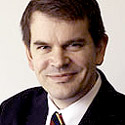08:00 PM
Patriot Missiles for the Market
The financial services world is full of surprises. From the manipulation of Libor and FX fixings to the "London Whale" who lost JPMorgan Chase $6 billion (plus fines) trading credit default swaps, the surprises just keep getting bigger.
What causes these potential crises can be generalized as "unwanted behaviors." Market abuse, rogue algorithms, and manipulative traders can happen to any firm at any time and on anyone's watch. This is making financial services firms rightly nervous. The good news is that they already have the technology in place to help combat these crises -- they just might not realize it.
Today's financial services firms are well set up to find "wanted behaviors." An example of a wanted behavior is a trading pattern that we know can yield profit. For example, a break in correlation between two instruments that are typically correlated offers an arbitrage opportunity for a trading algorithm. To find this opportunity, the algorithm has to analyze fast, big data streams to identify the opportunity and respond in microseconds. So why not find unwanted behaviors in the same way? We can take the technology for analyzing and responding to patterns in fast, big data and use it to find and address unwanted behavior. That way, we turn offense into defense.
There are many examples in life of offensive weapons that are also used for defense. In 1983, US President Ronald Reagan proposed the Strategic Defense Initiative (SDI) -- also known as "Star Wars" -- where nuclear explosion-powered X-ray lasers in space could be used to shoot down Russian nuclear missiles in flight. Even the concept of SDI was key to winning the Cold War.
Another offensive-turned-defensive weapon was seen in 1991 during Operation Desert Storm, in which an international force liberated Kuwait from invading Iraqi forces. Saddam Hussein acquired Soviet Union-developed Scud missiles and launched them at Kuwait and surrounding countries. However, another missile -- the Patriot missile, which was specifically designed to shoot down rogue missiles -- was used effectively to defend against this threat. Similarly, offensive viruses or snake venom are often used in antidotes to themselves. So what does a wanted-behavior architecture look like, and how can it be fine tuned to find unwanted behaviors? There are several pieces to the approach.
First, there is high-performance messaging to capture events and data of various types as it streams in. Second, we see high-performance, likely in-memory grids to capture and analyze this data, find new kinds of patterns, and perform back testing. Third, there is complex event processing (CEP) and streaming analytics to detect the patterns in the streaming data and react to them. Fourth, we see real-time visual analytics to visualize patterns in the data and show real-time performance.
In the trading world, this sort of architecture raises the curtain on big, fast data and discovers patterns that can make money by capturing the data and back testing and analyzing it. With monitoring systems, real-time visual tools, and messaging, financial firms tweak trading techniques and scrape a little more profit out of them.
With all these capabilities, financial services firms can control wanted behaviors in trading. So why can't these trading firms use the same technologies to detect unwanted behavior?
Put simply, they can.
High-speed trading technology can also be used to tackle undesirable activities. By giving it a slightly different purpose, firms can turn their technology infrastructure into a self-policing environment. Using fast messaging, an in-memory data grid, CEP, and visual analytics, they can become modern compliance officers almost overnight.
They can connect, capture, and store real-time data, link to historical data, and use real-time analytics to detect patterns in behavior. Visual analytics can show abuse patterns. Algorithms can make real-time decisions based on when and how to categorize and report an abuse pattern.
Detecting unwanted behavior such as system errors, insider trading, front running, wash trading, or quote stuffing will help prevent trade-related meltdowns such as the London Whale or the Knight Capital debacle. Monitoring trader behavior can help avoid another Libor or FX fixing scandal.
Et voilà -- by fine tuning technology initially designed for wanted behavior, you can detect and act on unwanted behavior. In essence, you build your own defense umbrella with your own Patriot missiles acting as the sentries for the market.
Dr. John Bates is a Member of the Group Executive Board and Chief Technology Officer at Software AG, responsible for Intelligent Business Operations and Big Data strategies. Until July 2013, John was Executive Vice President and Corporate Chief Technology Officer at Progress ... View Full Bio























